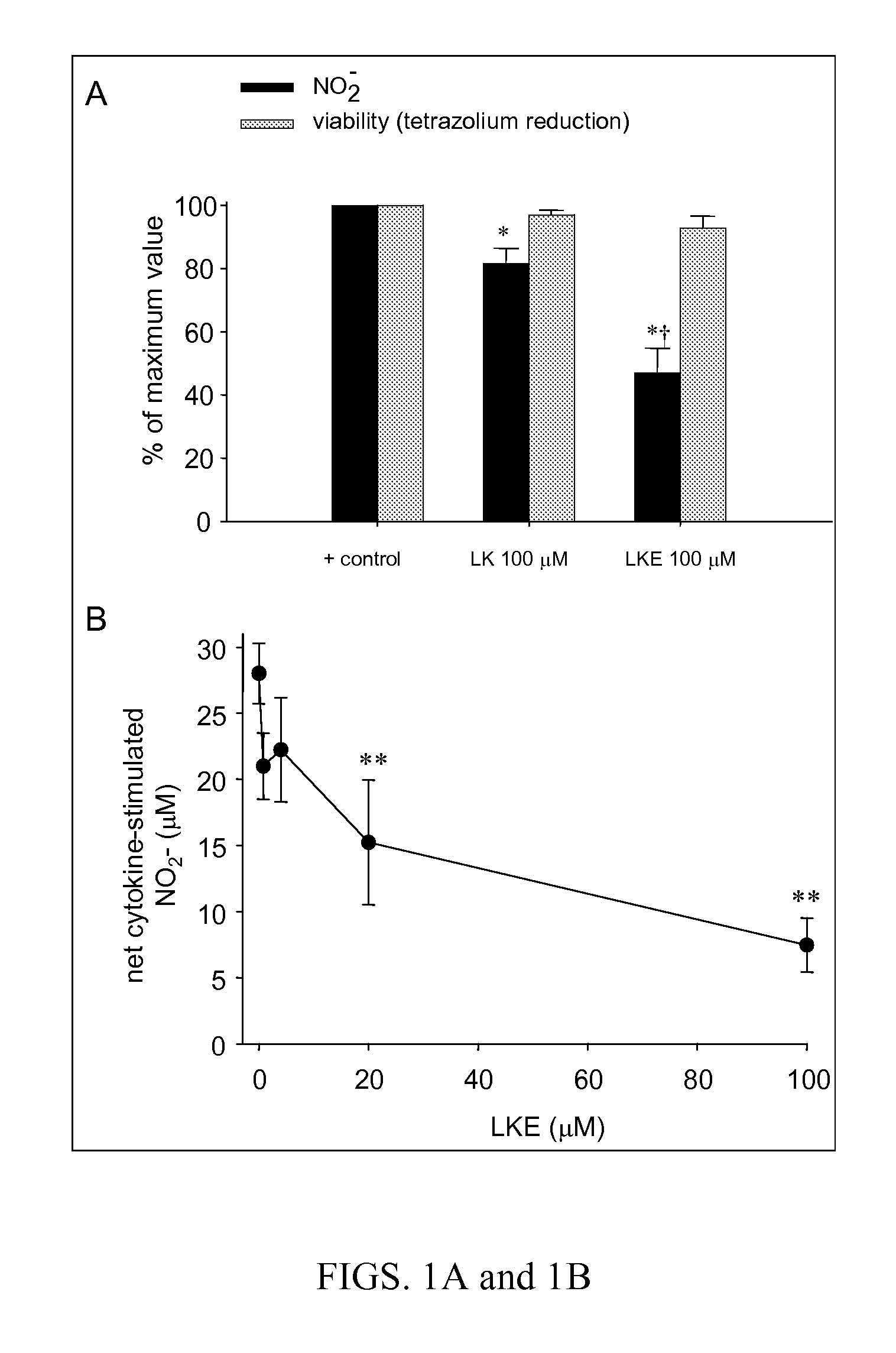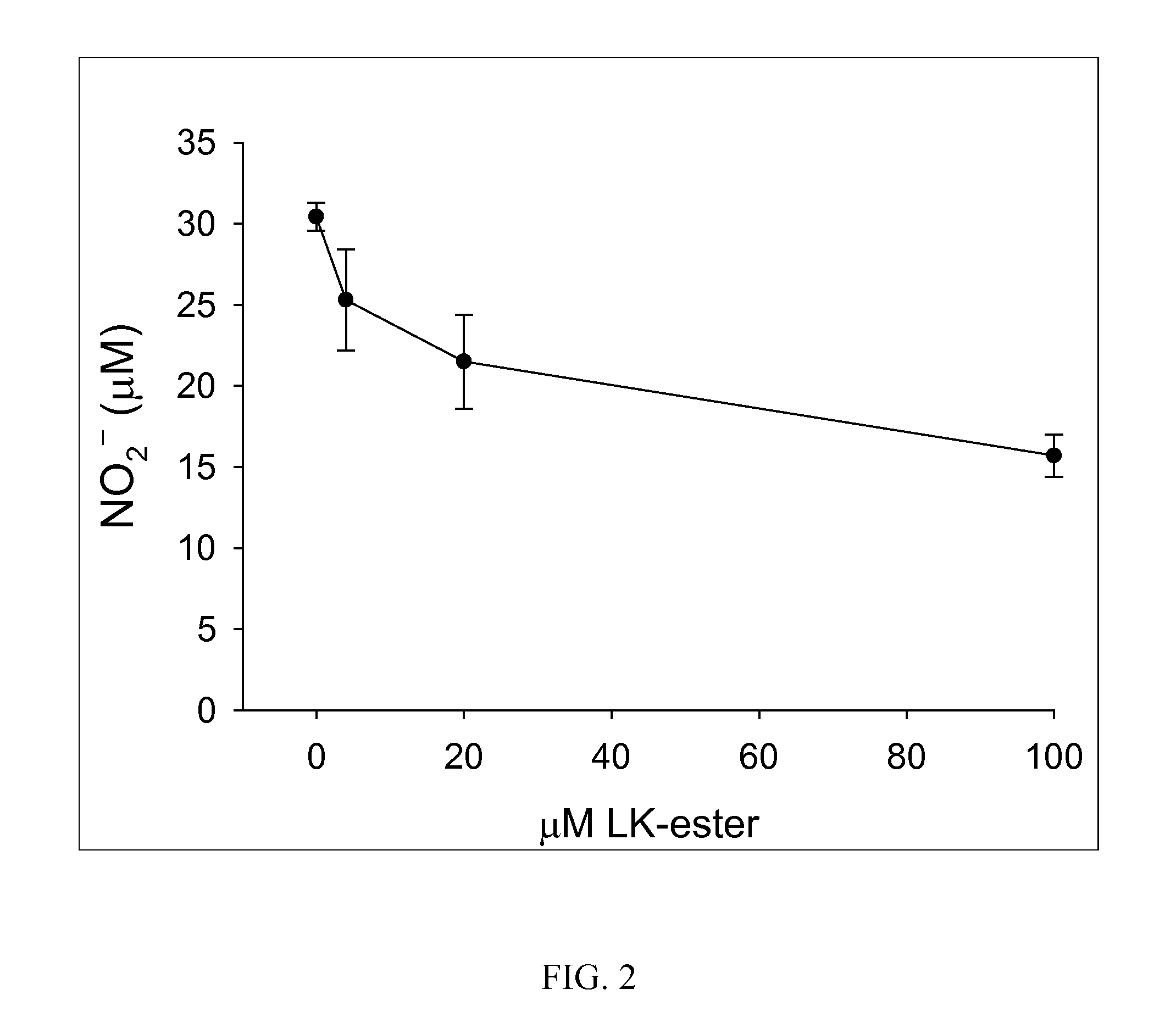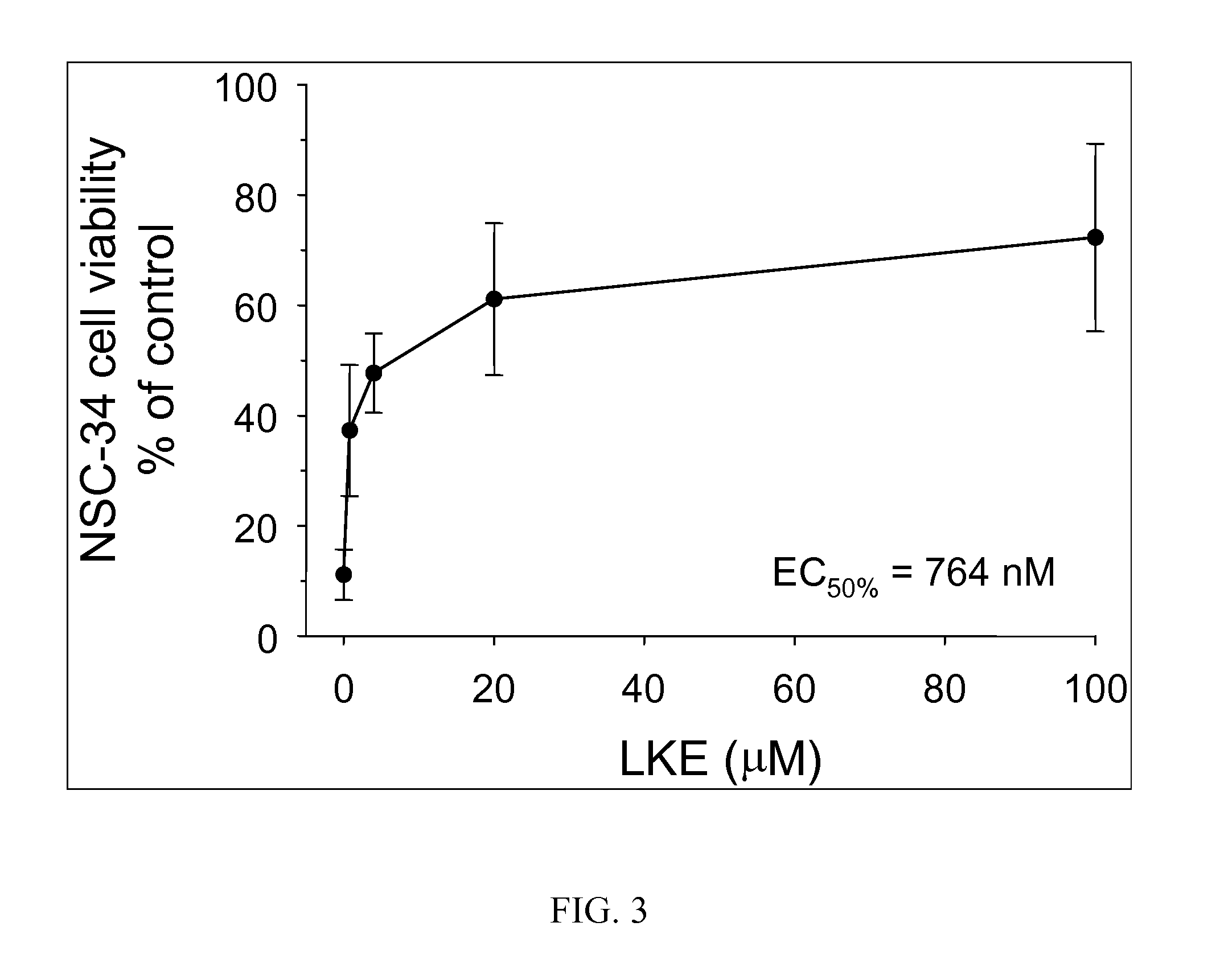Lanthionine-related compounds for the treatment of inflammatory diseases
a technology of lanthionine and ketimine, which is applied in the field of lanthionine ketimine compounds, can solve the problems of inability to demonstrate discrete bioactivities inherent in this unusual sulfurous metabolite, and prior investigators were unable to design a quantitative bioassay against which to test the relative efficacy, and achieve the effect of superior delivery of lk and/or tmdca
- Summary
- Abstract
- Description
- Claims
- Application Information
AI Technical Summary
Benefits of technology
Problems solved by technology
Method used
Image
Examples
example 1
Synthesis of (R)-LK and (R)-LKE1
[0286](R)-LKE1 was synthesized according to the following Scheme:
[0287]
Equal volumes of 5% aqueous L-cysteine hydrochloride with 5% aqueous 3-bromopyruvate were mixed at ambient temperature. The resulting pearly white precipitate was filtered, washed thoroughly in deionized water, and recrystallized in warm 10% methanol. Purity was ascertained by high performance liquid chromatography (HPLC), 1H-NMR and mass spectrometry. Product was dried under N2(g) and dissolved in either DMSO or 0.1 N saline. In the latter case, the solution was made by dropwise addition of 2 N NaOH to pH 7.4. Saline solutions of LK and LKE were sparged with N2(g) and stored in aliquots at −80° C. until ready for use.
example 2
Inhibition of Inflammatory Response in Microglial Cells
[0288]Mouse EOC-20 microglia (American Tissue Type Collection, Gaithersville Md. USA) (Hensley et al., 2003; Walker et al., 1995) were grown in DMEM containing 20% L929 fibroblast-supplemented medium. Nitrite production by cytokine stimulated microglia was measured in cell culture medium using the Griess diazotization reaction as previously reported (Hensley et al., 2003; West et al., 2004).
[0289]The efficacy of (R)-LKE1 and (R)-LK as inhibitors of microglial cell activation in response to pro-inflammatory cytokines is shown in FIGS. 1A & 1B. EOC-20 murine microglial cells were pretreated 30 minutes with test compounds (e.g. (R)-LK or (R)-LKE1) dissolved in DMSO and diluted 1:200 into cell culture medium; or with DMSO vehicle only. Cells were then challenged with cytokine and allowed to incubate undisturbed in the cell culture incubator for 24 h prior to Griess assay. The lanthionine ketimine ester in this case is the structure ...
example 3
(R)-LKE1 Inhibits Inflammatory Responses in Astroglial Cells and Macrophages
[0297]Primary astrocytes were cultured from neonatal R6 / 2 transgenic mouse pups (“Htt+”) which are the standard murine model for Huntington's disease (animals commercially obtained from Jackson Labs) or nontransgenic littermates. For RAW cell studies, RAW264.7 macrophages were obtained commercially from American Type Culture Collection. RAW 264.7 macrophages were grown in DMEM plus 10% FBS and 1% Pen / Strep. Cells were maintained in culture according to published methods. Cells were treated with + / −1 μ / mL bacterial lipopolysaccharide serotype 0127:B8 (Sigma Chemical)+ / −various concentrations of (R)-LKE1 for 24-48 h. (R)-LKE1 was added 30 minutes prior to LPS challenge. Nitrite was measured in the cell culture medium using the Griess diazotization assay. Cells were lysed and Western blots performed for protein expression or in other experiments for ribonuclease protection assays.
[0298]The Htt+ astroglia were f...
PUM
| Property | Measurement | Unit |
|---|---|---|
| time | aaaaa | aaaaa |
| time | aaaaa | aaaaa |
| structure | aaaaa | aaaaa |
Abstract
Description
Claims
Application Information
 Login to View More
Login to View More - R&D
- Intellectual Property
- Life Sciences
- Materials
- Tech Scout
- Unparalleled Data Quality
- Higher Quality Content
- 60% Fewer Hallucinations
Browse by: Latest US Patents, China's latest patents, Technical Efficacy Thesaurus, Application Domain, Technology Topic, Popular Technical Reports.
© 2025 PatSnap. All rights reserved.Legal|Privacy policy|Modern Slavery Act Transparency Statement|Sitemap|About US| Contact US: help@patsnap.com



